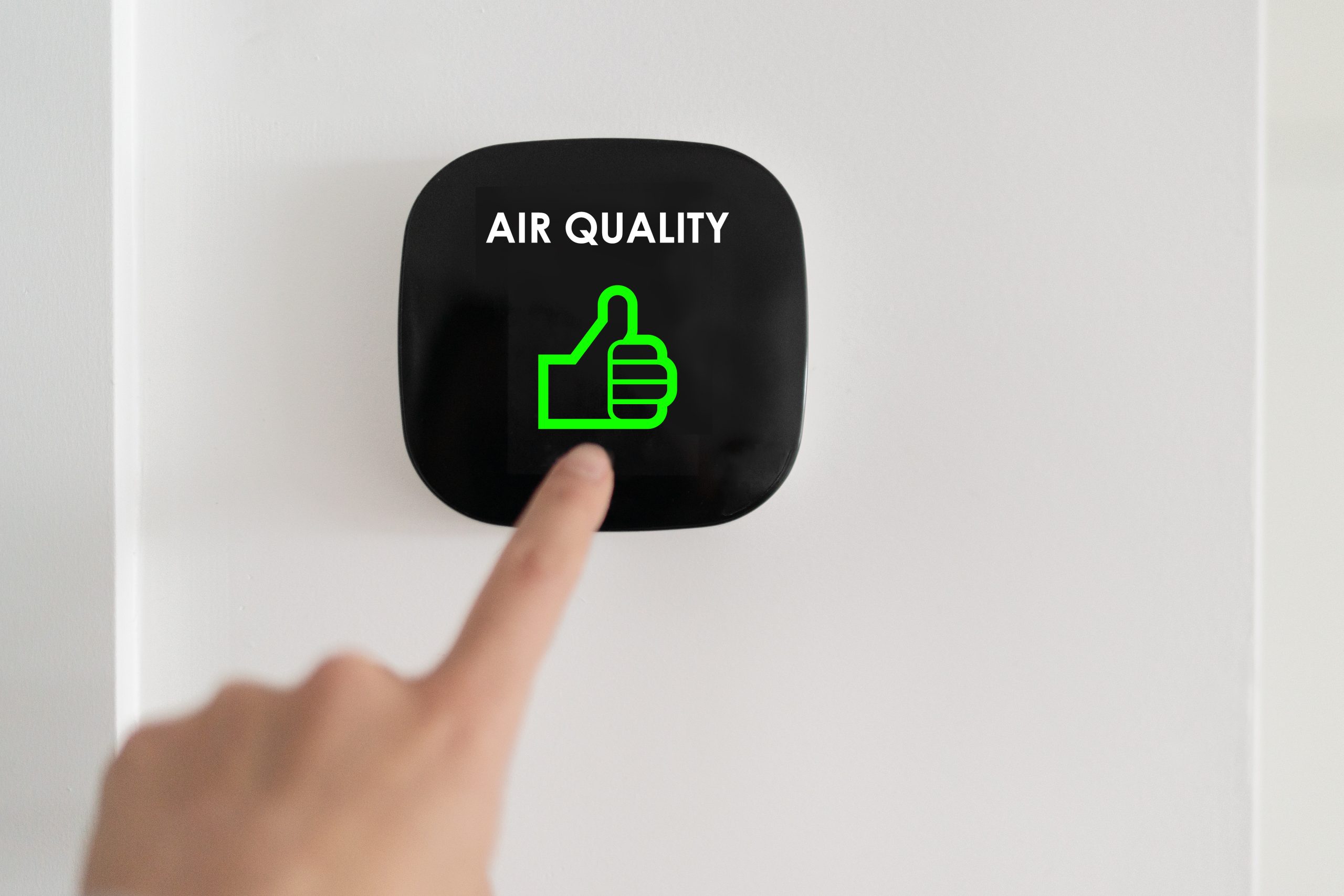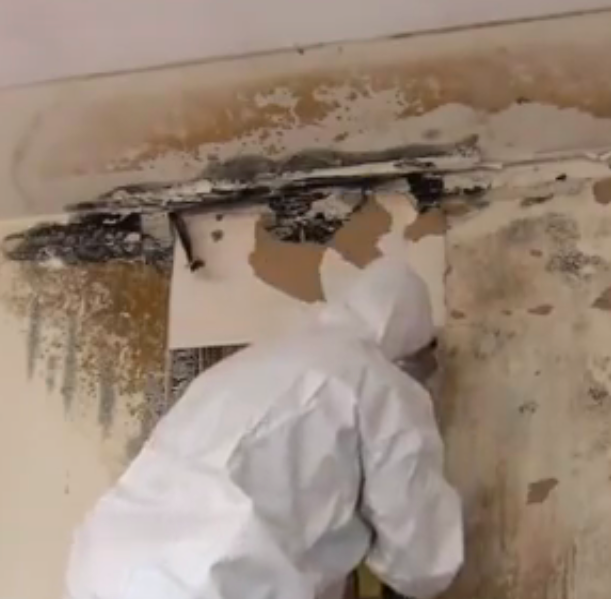In today’s modern world, the concept of home is synonymous with safety, comfort, and relaxation. We take pride in maintaining our homes, ensuring they are clean, organized, and presentable. However, while we diligently clean surfaces and rid our homes of visible dirt and clutter, we often overlook an invisible threat: the quality of the air we breathe indoors.1
The air within our homes can be more polluted than outdoor air, even in the largest and most industrialized cities. This revelation is startling, especially when considering the vast amount of time we spend indoors, whether for work, leisure, or rest. Factors such as inadequate ventilation, the off-gassing of volatile compounds from furniture and building materials, and the use of household cleaners and aerosols can all contribute to this indoor pollution.
As homes are designed to be more energy-efficient, they are often sealed more tightly, reducing the amount of fresh air that can circulate and potentially trapping pollutants inside. This lack of ventilation can exacerbate the concentration of harmful substances in the air, making indoor spaces a hotbed for allergens and irritants.
While outdoor air quality often garners more attention, especially in discussions about environmental pollution and climate change, indoor air quality is equally, if not more, critical. After all, our homes are where we seek refuge from the outside world, where we raise our families, and where we spend moments of relaxation and rejuvenation. Ensuring that this environment is free from harmful pollutants is paramount for our well-being and overall health.
Understanding VOCs and Their Impact on Indoor Air Quality
Volatile Organic Compounds (VOCs) are a group of organic chemicals that can easily evaporate into the air. They are emitted from various sources, including household products, building materials, and even certain activities like cooking and cleaning. The U.S. Environmental Protection Agency (EPA) has highlighted the significance of VOCs as they can adversely affect indoor air quality.2
While the term “VOC” might sound technical and distant, these compounds are more common in our daily lives than we might realize. From the fresh scent of a newly painted room to the distinct aroma of certain cleaning agents, VOCs are often right under our noses, quite literally. They can be found in a myriad of everyday products such as air fresheners, cosmetics, adhesives, and even some types of furniture.
Although some VOCs are harmless, others can have short-term and long-term health effects. Immediate reactions to high levels of VOCs can range from eye, nose, and throat irritation to headaches and dizziness. These symptoms can be particularly pronounced in individuals with sensitivities or respiratory conditions. However, the concerns with VOCs don’t end with these immediate reactions. Prolonged exposure to certain VOCs can have more severe health implications. For instance, some VOCs are known carcinogens, meaning they can increase the risk of cancer with sustained exposure. Others can affect the central nervous system, leading to mood changes, reduced cognitive function, or even chronic conditions over time.
The concentration of VOCs indoors can be up to ten times higher than outdoors, especially in newly constructed or renovated spaces where fresh paint, new furniture, and updated flooring can release these compounds. This concentration disparity underscores the importance of being aware of the products we bring into our homes and the potential impact they can have on our indoor air quality.
However, it’s not all doom and gloom. By being informed and making conscious choices, homeowners can significantly reduce their exposure to harmful VOCs. Opting for low-VOC or VOC-free products, ensuring adequate ventilation during and after activities that release these compounds, and using air purifiers can all help in maintaining a healthier indoor environment.
In summary, VOCs, while ubiquitous, can be managed with awareness and proactive measures. Recognizing their sources and understanding their potential impact is the first step in ensuring that our homes remain safe havens, free from harmful air pollutants.
Technical Aspects of VOCs
VOCs encompass a wide range of organic compounds. By definition, they are any carbon compound, excluding specific substances like carbon monoxide and carbon dioxide, that participate in atmospheric photochemical reactions. Their volatility, or the ability to evaporate under normal conditions, is what classifies them as VOCs. The European Union, for instance, defines a VOC as any organic compound with a boiling point less than or equal to 250° C at standard atmospheric pressure.
The science behind VOCs is both fascinating and complex. These compounds can be emitted from both natural and man-made sources. For instance, trees and plants release certain VOCs, which can contribute to the formation of ground-level ozone and particulate matter, both of which are significant components of smog. On the other hand, man-made VOCs, often found in products and materials we use daily, can have a more direct impact on indoor air quality.
The rate at which VOCs evaporate into the air, known as their volatility, is influenced by their molecular structure and external conditions like temperature and humidity. Some VOCs will evaporate almost immediately upon being released, while others might take longer, depending on their boiling points and the surrounding environment.
But why does volatility matter? The rate at which these compounds enter the air can influence the risks they pose. Compounds that quickly evaporate can lead to high concentrations in a short amount of time, potentially leading to immediate health effects for those exposed. Conversely, compounds that are less volatile might accumulate over time, leading to prolonged exposure and potential long-term health implications.
Another critical aspect of VOCs is their reactivity. Once in the atmosphere, VOCs can react with other compounds, leading to the formation of secondary pollutants. For instance, when VOCs react with nitrogen oxides in the presence of sunlight, they can form ground-level ozone, a primary component of smog. This reactivity not only affects outdoor air quality but can also influence the composition of indoor air, especially in spaces with limited ventilation.
The technical nuances of VOCs play a crucial role in determining their impact on air quality and human health. Understanding these intricacies can provide valuable insights into how we can effectively manage and reduce the risks associated with these compounds, ensuring safer and healthier living and working environments.
The Invisible Threat in Our Homes
Our homes, which we often view as sanctuaries, can sometimes harbor pollutants that compromise the air we breathe. Activities we deem as cleaning or improving our homes, such as cooking or using certain products, can inadvertently reduce our indoor air quality. This is especially concerning since air, being invisible, is often not a priority in our cleaning routines. Yet, it plays a crucial role in our overall health and well-being.
The modern home is a complex environment, filled with a myriad of products and materials designed to enhance our comfort and convenience. From the paint on our walls to the furniture we relax on, and the cleaning products we use, many items can release VOCs and other pollutants into the air. Over time, without proper ventilation, these compounds can accumulate, leading to concentrations much higher than what we might encounter outdoors.
Moreover, our daily activities can also contribute to indoor air pollution. Cooking, for instance, can release particulate matter, gases, and even VOCs, especially when using high temperatures or frying. Burning candles, especially those made of paraffin wax, can emit soot and other harmful compounds. Even seemingly benign activities, like printing a document or using a hair spray, can introduce pollutants into our indoor environment.
This accumulation of pollutants is further exacerbated in homes designed for energy efficiency. While energy-efficient designs are excellent for reducing energy consumption and lowering utility bills, they often result in homes that are tightly sealed, limiting the influx of fresh outdoor air. Without regular ventilation, pollutants can remain trapped inside, leading to a continuous cycle of exposure for the home’s occupants.
The health implications of poor indoor air quality can be significant. Short-term exposure to high levels of pollutants can lead to symptoms like headaches, dizziness, fatigue, and respiratory irritation. For individuals with pre-existing conditions, such as asthma or allergies, these effects can be even more pronounced. Long-term exposure, on the other hand, can lead to more severe health issues, including respiratory diseases, heart disease, and even cancer.
Breathing Easy: Prioritizing Indoor Air Quality in Modern Homes
In our quest for modern comforts and conveniences, we’ve transformed our homes into advanced living spaces equipped with the latest technologies and amenities. However, this evolution has also brought about challenges, particularly concerning the quality of the air we breathe indoors. As we’ve delved into the complexities of indoor air pollutants, especially VOCs, it’s become evident that ensuring clean indoor air is not just a luxury but a necessity for a healthy life.
Our homes, which are designed to shield us from external threats, can sometimes inadvertently expose us to invisible dangers. The products we use, the materials we surround ourselves with, and even our daily activities can contribute to indoor air pollution. This realization underscores the importance of being proactive and informed. By understanding the sources of indoor air pollutants and their potential impacts, we can make better choices, both in terms of the products we bring into our homes and the habits we adopt.
As homeowners and consumers, we have the power to drive change. By opting for low-VOC or VOC-free products, prioritizing ventilation, and investing in air purification systems, we can create indoor environments that promote well-being and health. Additionally, as awareness about indoor air quality grows, there’s hope that industries will respond by developing products that are not only effective but also environmentally friendly and safe for indoor use, while also following all regulatory compliance rulings.
In the grand scheme of things, the quality of our indoor air is a reflection of the choices we make and the priorities we set. By placing health and well-being at the forefront, we can transform our homes into true sanctuaries, free from pollutants and rich in clean, fresh air. After all, our homes should be places where we not only live but thrive.





